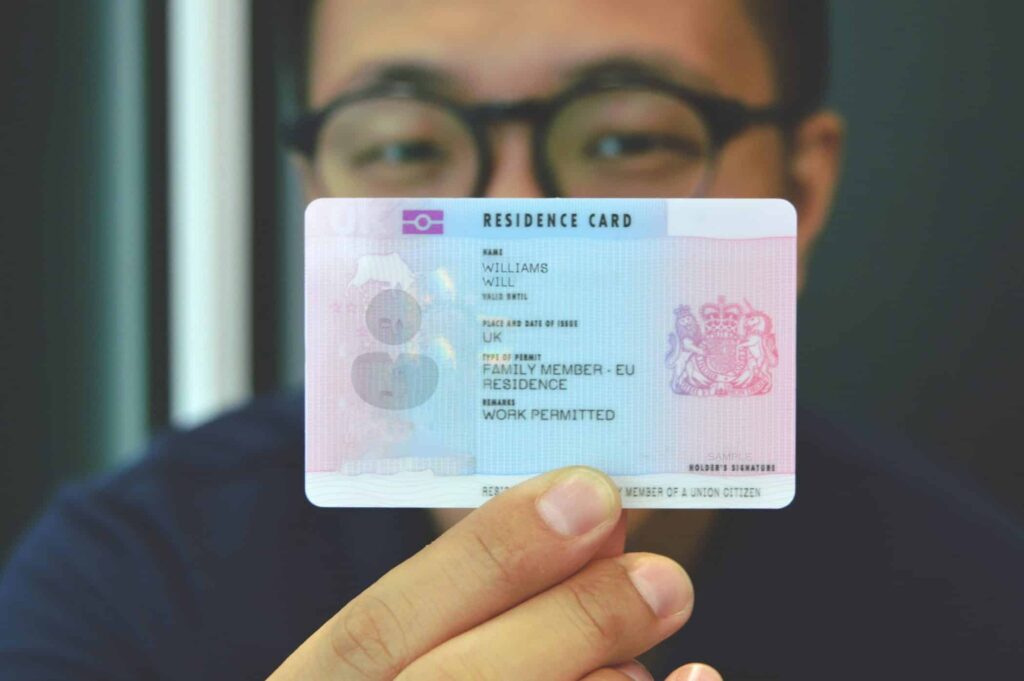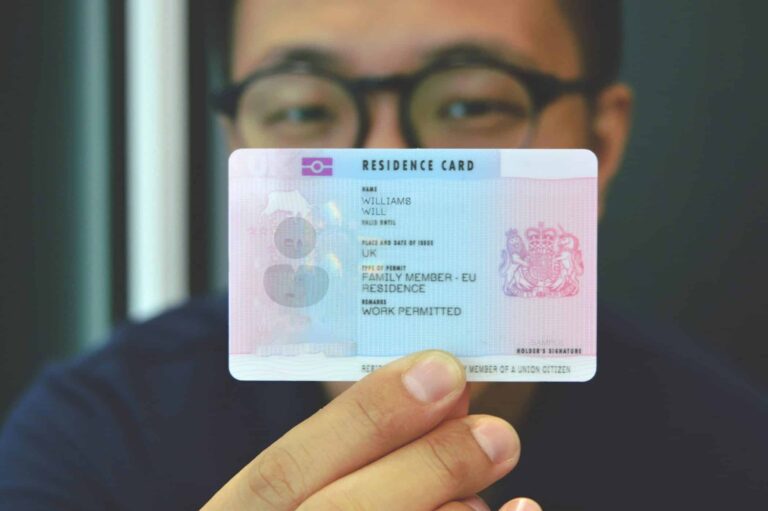Get Right to Work Share Code
Within the framework of the UK’s illegal working prevention regulations, it’s imperative that every employer adheres to the mandated procedure of conducting prescribed get right to work code assessments for all personnel. In specific instances, an additional follow-up check might be necessary for individuals with time-limited UK residency rights. Fortunately, streamlining this process is now achievable through the utilization of share codes, granting access to the online right-to-work verification service.
Our comprehensive employer’s guide not only provides insights into the seamless application of share codes for compliant right-to-work assessments but also elucidates the essential record-keeping obligations that ensue once the assessment has been successfully concluded.
Table of Contents
What is a right to work check share code?
A right-to-work check share code is an alphanumeric code furnished by certain new entrants or existing employees when a subsequent review is mandated. This code affords employers access to the individual’s online record stored within the right-to-work verification service. Operated by the Home Office, this platform empowers international citizens to access their immigration status digitally and to provide employers with a share code as evidence of their eligibility to work in the UK.
Employing a share code, employers can promptly ascertain a candidate’s UK work rights by tapping into real-time data directly from the Home Office systems. This encompasses the scope of permissible employment activities and the duration of such engagements, if time-limited. This mechanism assures the employer that the individual possesses the necessary authorization to work within the UK and to engage in the available role.
Furthermore, this service can be revisited for future follow-up assessments as needed.
Importantly, migrant workers are not obligated to present a share code for online right-to-work verifications, and no adverse consequences should arise if they choose not to provide one. It’s essential to note that a manual right-to-work check can still be executed, ensuring flexibility for such scenarios.
Who can get a share code right to work uk?
The swiftest and most straightforward approach to conducting a right-to-work check involves requesting a share code from potential or current employees. This empowers employers to swiftly access and review their immigration status online, streamlining the process of confirming the work rights of international staff members.
Nonetheless, this method isn’t universally applicable.
The online verification service exclusively accommodates right-to-work checks for migrant workers possessing specific statuses, such as those benefiting from the EU Settlement Scheme or individuals whose immigration status exists solely in digital form. This encompasses individuals with an E-visa, Biometric Residence Permit (BRP), Biometric Residence Card (BRC), or a Frontier Worker Permit (FWP).

A Complete Guide to Biometric Residence Permit (BRP) 2024
A BRP is a secure and versatile identity card with an embedded chip (enhancing its security to deter forgery and misuse) that non-EEA and non-Swiss nationals are required to obtain when they are granted permission to reside in the United Kingdom for more than 6 months. It is an essential document that verifies an individual’s immigration status and includes biometric information like fingerprints and a photograph.
As per the Home Office’s March 2023 guidelines, eVisa holders with valid immigration permission can now supply their employer with a share code to validate their work rights. This holds true if they’re pursuing an in-country eVisa extension via the UK Immigration: ID Check app, lack settled or pre-settled status, possess a frontier worker permit, submitted their application post January 26, 2023, and before their existing immigration permission expires, and are awaiting a decision on their application, administrative review, or appeal.
In these instances, upon the employee’s provision of the share code, the employer can rely on a statutory excuse for six months following the online check. This negates the necessity of engaging the Home Office Employer Checking Service. Standard follow-up checks will still be mandatory, as is customary, before the visa’s expiration.
How to conduct Right to Work checks using share codes
Upon receiving authorization from a potential or current employee to access and review their Home Office record, coupled with the provision of a legitimate share code, the sequence to perform compliant checks through share codes for employers unfolds as follows:
- Navigate to the Home Office’s right-to-work checking service on GOV.UK.
- Access the ‘View a job applicant’s right to work details’ section, distinct from the worker’s segment.
- Enter the 9-character alphanumeric code along with the individual’s birthdate.
- Validate that the online photograph aligns with the corresponding individual.
Given that the individual possesses the requisite right to work in the UK and is eligible for the specific job role, the employer is free to proceed with their employment or retain their current employment status.
The share code comes into existence when an individual grants permission for their employer to access their status online through the ‘Prove your right to work to an employer’ section on the online right-to-work checking service at GOV.UK. To generate a ‘share code,’ migrant workers will need their BRP share code or BRC number, passport, or national identity card number.
The employee has the option to directly provide the share code to their employer. Alternatively, they can request the code’s delivery via a government service, resulting in the employer receiving an email from [email protected]. This share code remains valid for 90 days and can be utilized multiple times within that span. In cases of expiration or if an individual uses a code from a different service, such as the right-to-rent service, the employer must ask for a fresh right-to-work share code. Mere reliance on the details provided by the employee within the migrant section of the service isn’t deemed sufficient.
What are the right to work record-keeping requirements?
Upon completing the online right-to-work check through the share code checker, it becomes imperative for the employer to maintain evidence of this assessment. This entails either printing out or conserving the profile page of the relevant employee, encompassing their photograph and the date of the conducted check. Following the check, the employer will be presented with the choice of either printing the profile page or saving it as a PDF or HTML file.
Subsequently, the employer is obliged to securely retain either a digital or hard copy of the response furnished for the duration of the individual’s employment, plus an additional span of two years thereafter. After this stipulated duration, the file must be securely disposed of in accordance with appropriate data protection practices.
Is the share code checker the only way to conduct a check?
The share code checker, available through the online right-to-work checking service, is among the different methods to carry out a right-to-work check. The specific approach can vary based on the employee’s nationality. Sometimes, the online share code checker might be the sole option, especially when the employee’s status is purely digital. For instance, individuals holding BRP, BRC, or FWP will exclusively use the Home Office online service to verify their right to work.
However, there are scenarios where an online check might not be applicable for an employee. It’s also possible that the employee hasn’t provided a share code for employers. So, the right-to-work verification process can differ based on individual circumstances.
Other ways of conducting a right to work check include:
- Manual Document-Based Check: This method involves physically reviewing and verifying the authenticity of the employee’s documents to confirm their right to work.
- Employer Checking Service (ECS): The ECS is utilized to perform an electronic check by submitting the employee’s details for validation by the Home Office.
- Digital Right to Work Check: This process involves the online verification of an employee’s right to work using digital tools, such as share codes and the Home Office’s online service.
A manual check
When carrying out a manual right-to-work check, the employer gathers specific documents from the potential or current employee, selected from either List A or B of accepted documents. List A contains documents indicating a permanent UK work right, while List B includes documents reflecting a temporary UK work right. You can find these lists on GOV.UK.
The provided documents must be originals and need to be reviewed in the presence of the individual. As long as the person rightfully holds the document(s), is eligible for the type of work offered, the UK right-to-work date hasn’t expired, and the document(s) appear genuine, the employer can proceed with hiring or maintaining their employment.
Note that the temporary adjustments for manual right-to-work checks introduced during the pandemic, where document validity could be confirmed via live video link, ended on September 30, 2022. This implies that during a manual check, the employer must physically possess the document(s) and the individual must be present.
The employer should retain unalterable copies of the documents, record the check date, and securely store this evidence for a minimum of 2 years after the person stops working for them.
An ECS check
In situations where an overseas national holds a pending Home Office application from before their previous leave expired, or there’s an ongoing review or appeal of a Home Office decision, conducting either an online or manual right-to-work check might not always be feasible. If the employer reasonably believes this to be the case, an alternative option is to request a positive verification notice via the Employer Checking Service (ECS).
To initiate an ECS check, the employer should furnish their business details, the individual’s personal particulars, job title, and the Home Office reference number or case ID. Upon confirmation of the individual’s eligibility to work in the UK, the employer should receive a positive verification notice that serves as proof. This notice should be retained for their records.
For potential employees, the employer must defer the start date until they receive Home Office confirmation of the person’s right to work. As for existing employees applying to extend their stay in the UK, they can generally continue working during the decision period, given they submitted their application before their last leave’s expiration.
A digital share code check right to work
A digital right-to-work check involves the utilization of identity document validation technology (IDVT) through an identity service provider (IDSP) for verification. This method, however, is applicable solely to British and Irish citizens possessing a valid passport.
Although elements of the checking process can be entrusted to IDSPs (Identity Service Providers), the core responsibility for conducting right-to-work checks rests with the employer. Before an individual begins employment, the employer is required to acquire a copy of the IDVT (Identity Document Validation Technologies) identity check from the IDSP, in addition to the verified document. This step ensures that the employer holds reasonable confidence that the chosen provider has accurately completed the check as per the established protocol. Furthermore, they should verify that the biographic details and photograph on the IDVT identity check align with the individual presenting themselves for employment.
Additionally, the employer is obligated to securely preserve the data provided by the IDSP, either in electronic form or as a hard copy, throughout the employment period and for an additional two years thereafter.
Penalties for breaching right to work rules
Every UK employer is entrusted with the responsibility of preventing illegal working. Typically, this duty can be fulfilled by performing a straightforward online right-to-work check using a share code for employers. This approach ensures that before hiring, the employer can confirm that the potential employee is eligible to work in the UK and undertake the offered job, based on their immigration status. For cases with time-limited UK work rights, a follow-up check can be conducted at a later date.
Failing to execute the prescribed right-to-work check or a mandated follow-up check can lead to significant repercussions. If an overseas national is subsequently discovered to be working illegally, the employer’s safeguard against a civil penalty of £20,000 per worker lies in having conducted the right-to-work check.
Beyond financial penalties, more grave consequences await those who knowingly employ individuals without proper UK work permissions. Such an act may result in prosecution, with potential penalties including up to 5 years of imprisonment, an unlimited fine, or both. Furthermore, the employer’s actions might lead to the forfeiture of their sponsor license, the dismissal of legitimately authorized migrant employees, and substantial harm to the employer’s reputation.




